The most important moving parts in the brake system are the brake calipers. In order to work effectively, they must be able to squeeze the brake pads hard enough to create the necessary force to stop the vehicle.
What are the symptoms of a sticky brake caliper? The symptoms of a sticky brake caliper are noisy brakes, a vehicle that pulls to the side when braking, a burning smell from the rotors and brake fluid leaking from the caliper.
Most brake calipers fail because the become stiff and can even seize as they age. Most of the time the problem is caused by worn seals and seized pistons.
As an Amazon Associate we earn from qualifying purchases.
In this article I’ll explain the signs of a failed brake caliper, how to diagnose the problem and what you can do to fix it, including how much it is likely to cost.
5 symptoms of a Sticky brake caliper
The brake calipers are responsible for creating the brake force that squeezes the brake pads against the rotors when you put your foot on the brake pedal.
They are simple devices, consisting of a metal body that houses a movable piston. The piston moves outwards when forced from behind by brake fluid. To stop the brake fluid from escaping, there is a rubber seal behind the piston and a boot at the front that stops dirt and debris from getting in.
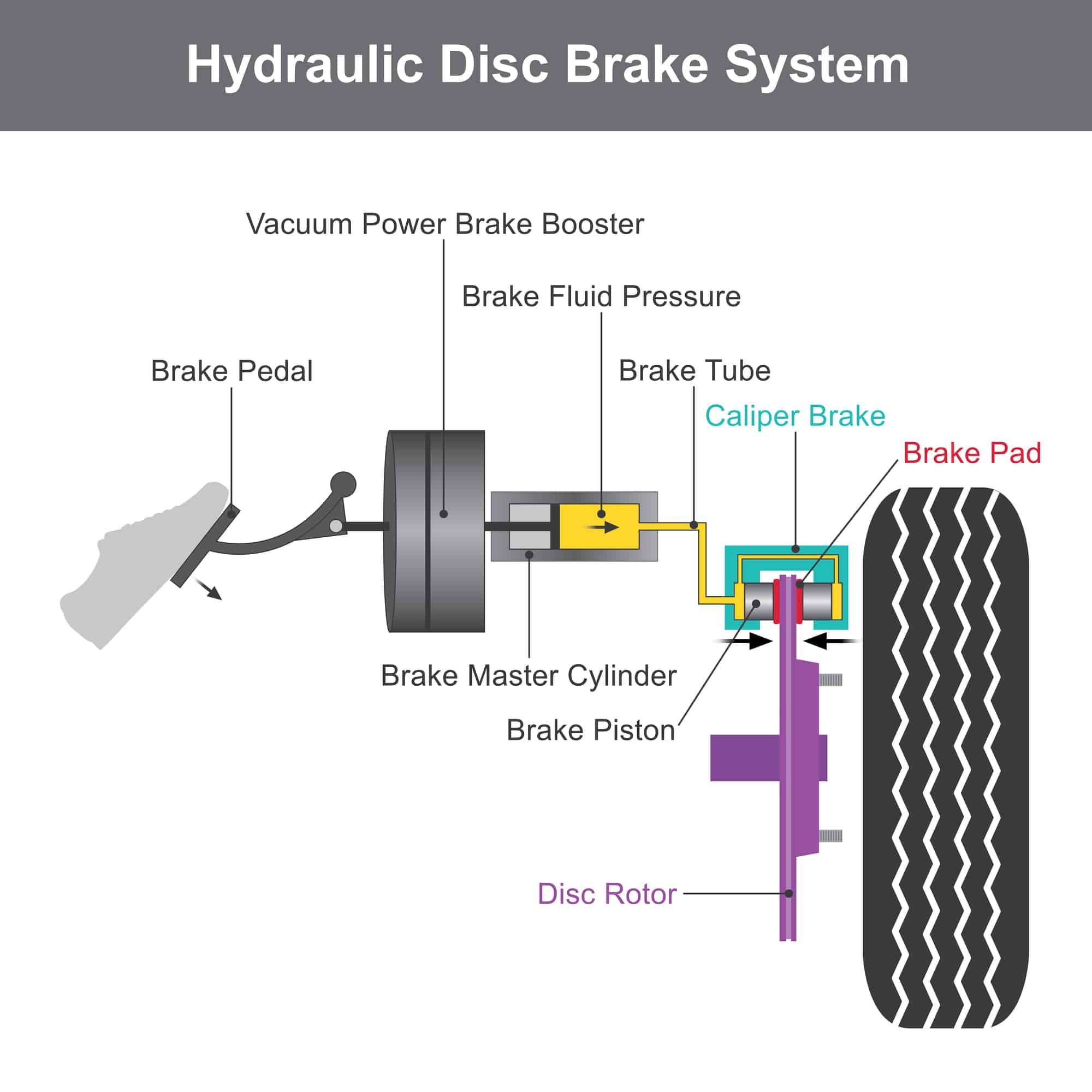
Brake calipers usually fail because the rubber seals harden and tear as they age. This allows the brake fluid to escape, causing a reduction in braking force. A worn outer seal will allow dirt to collect around the piston, causing it to corrode and get stuck in place.
A seized, sticky or leaking brake caliper will have some common symptoms as explained below:
1. The Vehicle pulls to the left or right when braking
If one of the brake calipers is seized, the piston will not move smoothly in response to you pushing the brake pedal. It will either exert too much force on the brake pad or too little.
If the brake force from a brake caliper differs from the other one on the same axle, this can cause the car to pull to the left or right when braking. This is obviously a dangerous scenario, especially if braking hard.
A seized brake caliper is often caused by a stuck brake caliper piston. This is a really common problem, especially with older vehicles. To fix it, you’ll need to remove the caliper from the vehicle and replace it with a new or refurbished caliper, or refurbish it yourself by taking it apart, cleaning it and replacing the rubber seals.
2. Screeching sounds and vibrations when braking
Sometimes the caliper can get jammed tight against the rotor, and it does not release even after you take your foot off the brake pedal.
This will cause the brake pads to wear out quickly and often unevenly as they constantly rub against the rotors.
If a piston is sticky and not moving smoothly in the caliper, then it may cause a vibration as it moves the brake pads in and out against the rotor. This can sometimes be felt in the brake pedal and steering wheel (if it’s a failed front brake caliper).
Again, the fix for this is a replacement or refurbished brake caliper. If the piston is really jammed into the caliper it can become damaged over time and will need to be replaced along with the rubber seals.
3. Excessively hot brake pads and rotors
If a stuck brake caliper is not fully releasing the pressure from the brake pads then the brakes will effectively be on when you are driving. This creates constant friction between the brake pads and rotors, causing them to over heat.
If the brakes are too hot, they will not work as effectively as they should. When the brake pads overheat it can lead to brake fade. This can be a temporary condition caused by braking a lot in hot conditions, that leads to the reduction in gripping power of the pads against the rotors.
The brake pads will usually regain their stopping power once they cool down. If however, they are constantly overheating, they will wear out pretty quickly and will need to be replaced.
Excessive heat from a seized caliper can also damage the rotors causing them to warp or crack, especially if they are already worn down a lot. The rubber seals in the caliper are also at risk of failing if they are constantly exposed to excessive heat, leading to further problems with the operation of the caliper.
4. Low brake fluid level
A sticky brake caliper may eventually fail and cause a brake fluid leak.
If a brake caliper fails, you run the risk of losing brake fluid from the system. A brake fluid leak is caused by perished leaky rubber seals and boots that seal the caliper piston and keep the brake fluid in and the dirt out.
A leaky brake system is dangerous. If the brake fluid drops below the minimum level, there will be a significant decrease in pressure in the system and a reduction in the effectiveness of the brakes.
The brake caliper can also leak at the brake hose joint. Most brake hoses are rubber hoses and even though they rarely split or leak, they can fail where they join to the brake lines and brake calipers.
If you suspect that your vehicle has a brake fluid leak, it’s really important to get it checked out immediately. Brake fluid, especially older fluid is brownish in color and has a distinctive, burnt or fishy smell.
5. Loss of brake power
A seized or sticky brake caliper will not move smoothly when you use the brakes. This reduces the effectiveness of the brakes and reduces the brake power that is available for stopping.
Depending on the cause of the seized brake caliper, sometimes a brake caliper can become seized in the open position and not move at all when you push on the brake pedal. This can be caused by seized brake caliper bolts or a buildup of dirt behind the brake caliper slides, that effectively stops the brake pads from being pushed against the brake rotor.
No matter what the cause, obviously a loss of brake power should be investigated straight away.
Why do brake calipers to stick?
Brake calipers usually seize up or become sticky due to a build up of dirt or road grit, rust, dirty or contaminated brake fluid or just because of age related wear and tear.
It’s unusual for brake calipers to stick on newer vehicles as this is usually associated with older, worn out vehicles.
So, what causes sticky brake calipers? Here are a few ways that a brake caliper can seize up.
1. Seized brake caliper piston
The brake caliper piston must be able to slide in and out smoothly within the caliper. When they are manufactured, brake pistons are lubricated with a special silicone brake grease before assembly. This prevents them from seizing and helps them to move quickly and smoothly within the caliper.
A brake caliper piston will become sticky if the lubrication dries out or escapes, or if dirt gets in between the piston and the caliper housing. This can happen if the outer caliper seal (rubber boot) becomes torn or falls out completely. This is very common, especially on rear brake calipers that can go for years between servicing.
The purpose of the rubber seal is to stop dirt getting in around the piston housing. If the seal splits or tears, then dirt such as brake dust and road grit will cause the brake caliper piston to seize up eventually.
2. Sticky caliper Pins
The movable part of the brake caliper is held in place with lubricated caliper pins that are held in place with caliper bolts.
The outer shank of this bolt and pin assembly, is coated with silicone lubricant to allow the moveable caliper bracket to slide in and out when the brake pedal is pushed and released.
The exposed part of the brake caliper bolts are covered by a flexible rubber sheath. This can harden and split over time, allowing the lubricant to escape and the bolts to dry out.
If these bolts dry out and get dirty, this can cause the brake caliper to get sticky and not move in and out as it should.
3. Dirty brake pads and brake pad shims
Because of their location, brake pads, rotors and calipers are all very exposed to dirt, road grit and basically everything else you drive through! As brake pads wear, they create brake dust that can build up around brake parts.
If all of these contaminants are allowed to build up on the movable brake parts, it can cause sticky or seized brake calipers. It’s very common for dirt to build up around the brake pad shims (sometimes called brake bad slides). These thin metal brackets clip onto the brake caliper and facilitate the movement of the brake pads inwards when they are pushed by the brake caliper piston.
Dirty brake caliper slides will block the smooth movement of the brake pads and can cause the caliper to stick.
4. Damaged brake hose
A less common cause of seized brake calipers is a clogged or damaged brake hose. It’s very unusual for a brake hose to become clogged with dirt. The brake system is a sealed system and it would be nearly impossible for dirt to get inside the brake hose.
It’s more likely that a brake hose can become damaged, pinched or worn and this can impede the flow of brake fluid to the brake caliper, causing it to seize in place.
What Next – How To Fix A Brake Caliper That Is Sticking
As I’ve explained above, the main causes of a sticky brake caliper are dirt build up and lack of lubrication.
To fix a seized brake caliper, you will need to remove the brake caliper and figure out what is causing it to stick. Most standard disc brake systems are similar in their setup, and can easily be taken apart by anyone with a few basic tools.
1. Jack up the vehicle and remove the wheel. Make sure that you use axle stands to support the vehicle while you are working on it. Remove the cap from the brake fluid reservoir in the engine bay, and wrap a clean cloth around the opening of the reservoir to catch any brake fluid that may come out.
2. Start by removing the two caliper bolts that are holding the caliper in place on the brake caliper bracket.
3. If the caliper is seized then it will more than likely be stuck in place, and won’t slide off the rotor easily. This is where you will need to get creative!
Use a flat blade screw driver and push it in between the brake pad surface and the surface of the brake rotor. Wiggle it about to loosen up the caliper and to brake the dirt seal between the piston face and the back of the brake pads. If the caliper is really seized you may need to disconnect the brake hose from the caliper to release the pressure on the caliper piston.
4. Once you have the caliper off, remove the brake pads, brake pad shims and slider bolts.
5. Check the condition of all of the brake caliper parts, and look for any tears or splits in the rubber seal at the face of the caliper piston and on the seals that cover the brake pad slide pins.
6. If the caliper piston seals are damaged they will need replacing, and the piston will need to be removed, cleaned and lubricated. You can either buy a kit to replace the rubber seals yourself, or buy an entirely refurbished brake caliper.
7. If the problem is dirt around the brake pad shims, then clean everything up with a wire brush and some brake cleaner before reassembly.
Heres a video showing how to service a sticky rear brake caliper.
How much does it cost to repair a sticky brake caliper?
A seized or sticky brake caliper can be cheap to fix, especially if you do it yourself.
If you need to replace the brake caliper with a new caliper, this can cost anywhere from $180 to $400. A fully refurbished brake caliper will cost a bit less. You an expect to pay between $80 and $150 for a professionally refurbished brake caliper.
If the caliper does not need replacing, then replacing the caliper pins and shims (sliders) will cost around $10 to $20 if you do the job yourself.
A mechanic will charge between $150 and $500 to repair a seized brake caliper.
Summary – Brake Caliper Sticking Symptoms
It is very common for one or more brake calipers to become seized as a vehicle ages. There are many signs of a sticky brake caliper and these include a vehicle that pulls to one side when braking, overheating of a brake rotor and pads, a burning smell from the wheel area and a loss of brake power.
Fixing a brake caliper involves removing it from the vehicle and cleaning it or replacing it with a new or refurbished caliper.
As an Amazon Associate we earn from qualifying purchases.






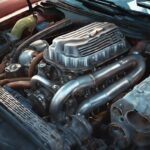
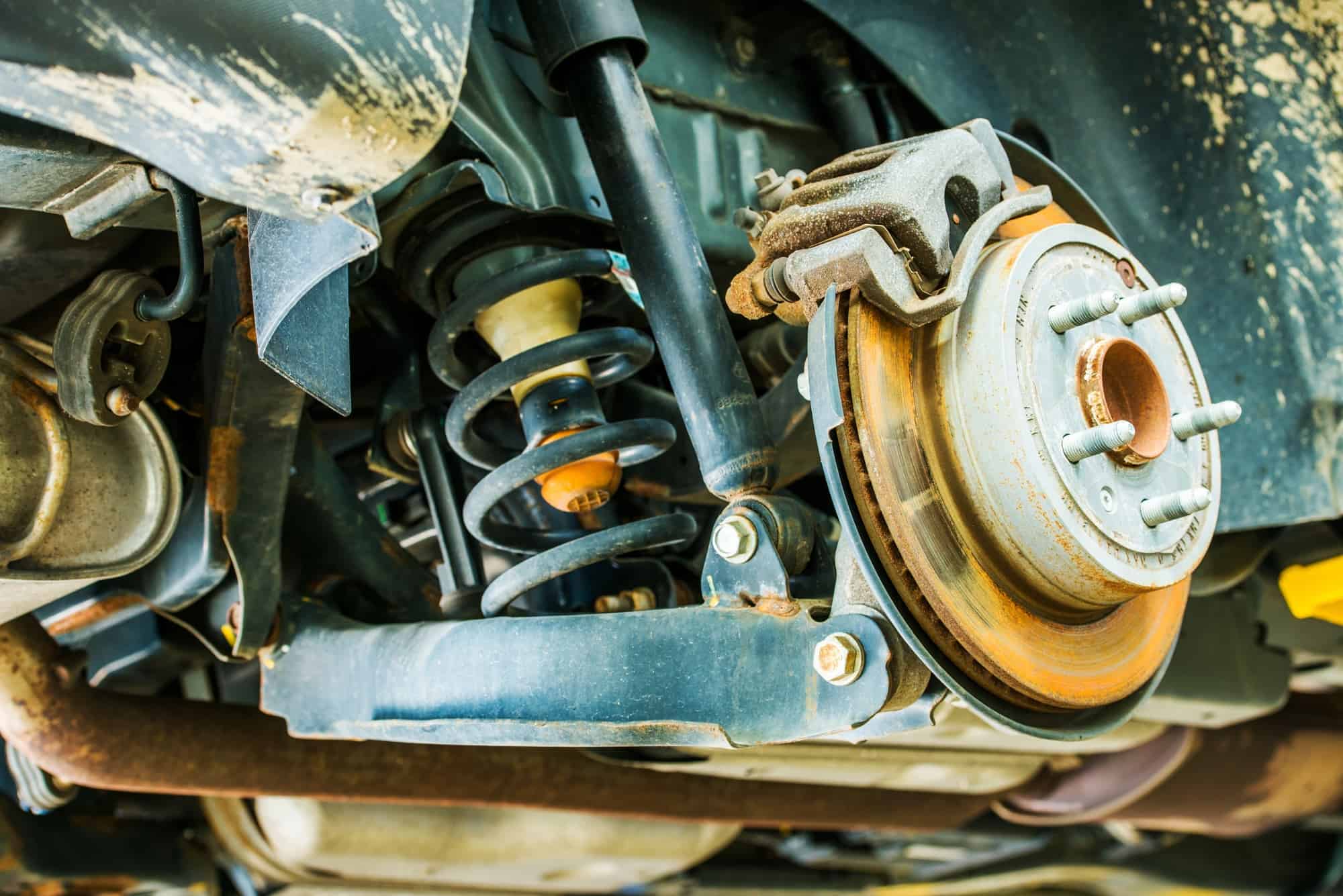





















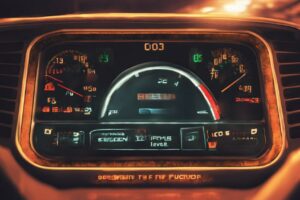
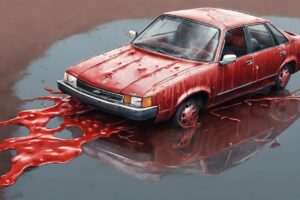
I’ve been experiencing a persistent pull to the left when I brake, and there’s also been a noticeable screeching sound. Could these issues be related to a sticky brake caliper, and if so, how urgent is it to get this checked and potentially repaired?
I’ve recently noticed that my car pulls to one side when I brake, and there’s also been a screeching sound. Could these symptoms indicate a sticky brake caliper, and if so, how urgent is it to get this fixed?